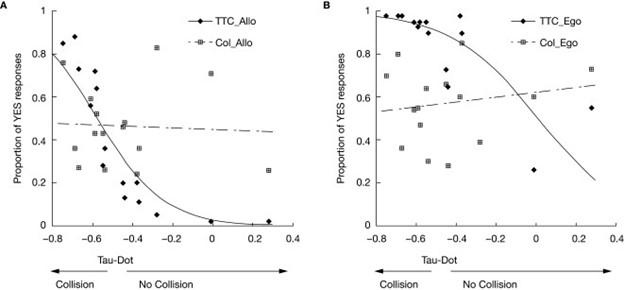
Baseball Swing Accuracy: Tau, Tau-Dot and Online Control Explained
By Ken Cherryhomes ©2024
The ability to accurately intercept or avoid moving objects is essential to many human activities, from stopping a car in time to avoid a collision to hitting a baseball. The brain uses a complex set of calculations, including tau and tau-dot, to predict the time to contact and adjust movements accordingly. In addition, the brain also employs online control, a continuous feedback loop that makes real-time adjustments to movements based on the sensory feedback.
The concept of tau refers to the time-to-contact calculation made by the brain. It is the perceived or predicted rate of travel of an observed object and is used to determine the optimal timing for an interceptive action. Tau is calculated by taking the ratio of the object’s distance to its speed, resulting in a time estimate for when the object will arrive at the interception point.
Tau-dot is a combination of tau and the calculated time the observer must act in order to avoid or intersect with the observed object, given the individual’s response time, both motor delay and motor movement. Tau-dot is the perceived moment at which an interceptive action must be initiated. It takes into account the observer’s reaction time, the delay in the motor response, and the execution time of the motor movement.
Research has shown that tau and tau-dot play a crucial role in many activities that require accurate interception or avoidance. For example, studies involving response time for stopping a car have shown that tau-dot is the perceived moment when the brakes must be applied to avoid a collision. The calculation of tau-dot takes into consideration how long it takes to apply the brakes and how long it takes for the car’s motion to be arrested.
In sports such as baseball and football, players use tau and tau-dot to accurately intercept or avoid moving objects. In football, the tackler waits for the last possible moment to act, so the opposing player doesn’t change course due to an early potential tackle cue. The tackler’s motion perceived mechanical time to contact, and consideration of visuomotor delay and reaction time all play a role in the interceptive action. In baseball, the batter considers their practiced, subconscious awareness of their swing time, their time to contact, and apply that to their prediction of when and where the pitched ball will arrive to time the collision between the bat and ball.
By employing the concepts of tau and tau-dot, timed intersections can be accurately predicted, but missed tackles or missed swings can still occur. That’s where eye/hand coordination, proprioception and online control come in. In baseball batting, the batter’s physical orientation, such as their posture, proximity to the strike zone and the bat’s vertical and horizontal angles, are tied to a combined event memory, and online control makes real-time adjustments to the swing based on the sensory feedback.
Online control refers to the continuous feedback loop that makes real-time adjustments to movements based on the sensory feedback. The brain uses sensory feedback from the environment, such as vision and touch, to make adjustments to movements during the course of the movement. For example, during a baseball swing, online control adjusts the swing based on the sensory feedback of the incoming pitch, allowing the batter to make precise adjustments to the swing. These can be quantified by observing the subtle differences in measured swing time to collision for identical pitches, resulting in seemingly identical swing results. When a batter swings at a baseball, the swing is launched and moving at a point around 18-feet away, where the batter can no longer see the ball. As a result, the adjustments made by the batter must occur before the motor delay has elapsed, even though they may appear to occur after. In other words, the batter’s brain is continuously processing information and making adjustments in real-time based on sensory feedback, adjusting to changes from the original prediction.
Online control complements the brain’s use of tau and tau-dot calculations to, in baseball batting, accurately intercept moving objects. In combination, these processes enable the batter to adjust their swing velocity and orientation of the bat, helping them hit the ball with greater accuracy.
In conclusion, the brain uses a combination of tau, tau-dot, and online control to accurately intercept or avoid moving objects. These calculations and adjustments are essential to many human activities that require accurate timing and movement. The use of online control ensures that movements can be adjusted in real-time based on sensory feedback, enabling precise and accurate control of movement.